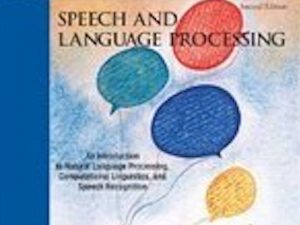Read up to the end of 8.5 carefully. Try to read 8.6 as part of Module 7, but rest assured we will go over the concept of dynamic programming again in Module 9. We recommend you should skim 8.7 and 8.8 because the same general concepts carry forward into Hidden Markov Models (again, we’ll come back to this in Module 9). You don’t need to read 8.9 onwards. Methods like DTW are rarely used now in state of the art systems, but are a good way to start understanding some core ideas.
Jurafsky & Martin – Chapter 9 introduction
The difficulty of ASR depends on factors including vocabulary size, within- and across-speaker variability (including speaking style), and channel and environmental noise.
Jurafsky & Martin – Section 4.1 – Word Counting in Corpora
The frequency of occurrence of each N-gram in a training corpus is used to estimate its probability.
Jurafsky & Martin – Section 4.2 – Simple (Unsmoothed) N-Grams
We can just use raw counts to estimate probabilities directly.
Jurafsky & Martin – Section 8.4 – Diphone Waveform Synthesis
A simple way to generate a waveform is by concatenating speech units from a pre-recorded database. The database contains one recording of each required speech unit.
Jurafsky & Martin – Section 8.5 – Unit Selection (Waveform) Synthesis
A brief explanation. Worth reading before tackling the more substantial chapter in Taylor (Speech Synthesis course only).
Jurafsky & Martin – Section 9.1 – Speech Recognition Architecture
Most modern methods of ASR can be described as a combination of two models: the acoustic model, and the language model. They are combined simply by multiplying probabilities.
Jurafsky & Martin – Section 9.2 – The HMM Applied to Speech
Introduces some notation and the basic concepts of HMMs.
Jurafsky & Martin – Section 9.3 – Feature Extraction: MFCCs
Mel-frequency Cepstral Co-efficients are a widely-used feature with HMM acoustic models. They are a classic example of feature engineering: manipulating the extracted features to suit the properties and limitations of the statistical model.
Jurafsky & Martin – Section 9.4 – Acoustic Likelihood Computation
To perform speech recognition with HMMs involves calculating the likelihood that each model emitted the observed speech. You can skip 9.4.1 Vector Quantization.
Jurafsky & Martin – Section 9.5 – The lexicon and language model
Simply mentions the lexicon and language model and refers the reader to other chapters.
Jurafsky & Martin – Section 9.6 – Search and Decoding
Important material on efficiently computing the combined likelihood of the acoustic model multiplied by the probability of the language model.

